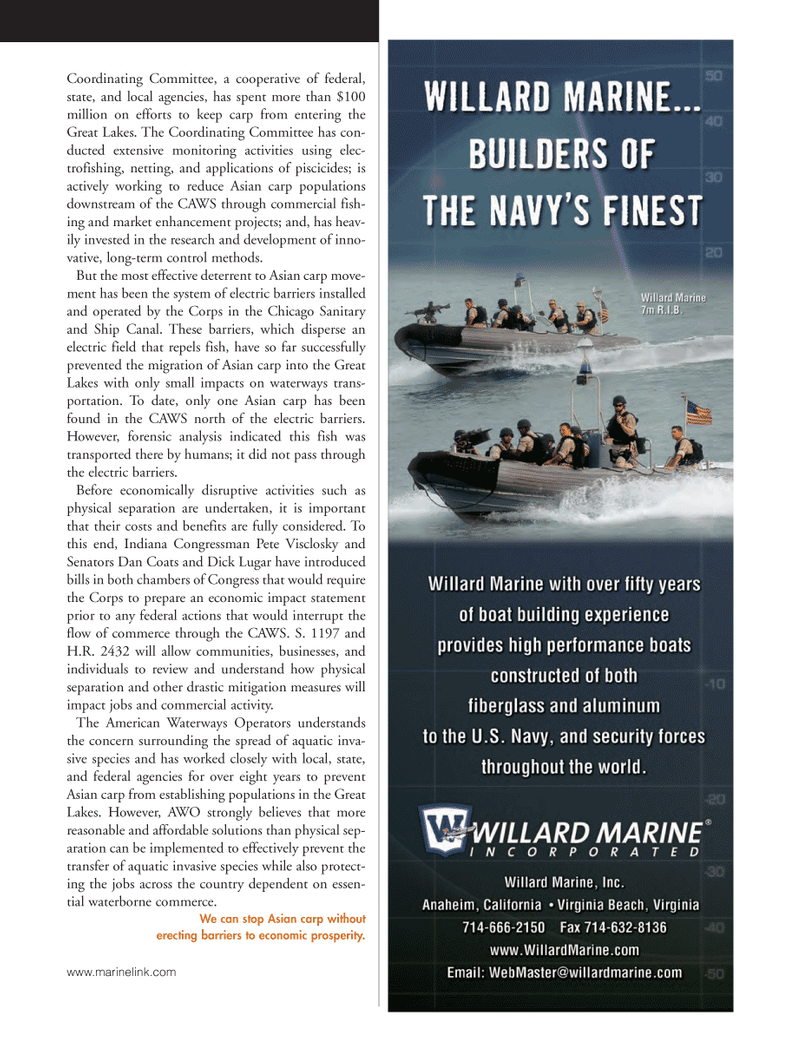
Page 23: of Marine News Magazine (March 2012)
Training & Education
Read this page in Pdf, Flash or Html5 edition of March 2012 Marine News Magazine
www.marinelink.com Coordinating Committee, a cooperative of federal, state, and local agencies, has spent more than $100 million on efforts to keep carp from entering the Great Lakes. The Coordinating Committee has con- ducted extensive monitoring activities using elec- trofishing, netting, and applications of piscicides; is actively working to reduce Asian carp populations downstream of the CAWS through commercial fish- ing and market enhancement projects; and, has heav- ily invested in the research and development of inno- vative, long-term control methods. But the most effective deterrent to Asian carp move- ment has been the system of electric barriers installedand operated by the Corps in the Chicago Sanitary and Ship Canal. These barriers, which disperse an electric field that repels fish, have so far successfully prevented the migration of Asian carp into the Great Lakes with only small impacts on waterways trans- portation. To date, only one Asian carp has been found in the CAWS north of the electric barriers. However, forensic analysis indicated this fish was transported there by humans; it did not pass through the electric barriers.Before economically disruptive activities such as physical separation are undertaken, it is important that their costs and benefits are fully considered. To this end, Indiana Congressman Pete Visclosky and Senators Dan Coats and Dick Lugar have introduced bills in both chambers of Congress that would require the Corps to prepare an economic impact statement prior to any federal actions that would interrupt the flow of commerce through the CAWS. S. 1197 and H.R. 2432 will allow communities, businesses, and individuals to review and understand how physical separation and other drastic mitigation measures will impact jobs and commercial activity. The American Waterways Operators understands the concern surrounding the spread of aquatic inva- sive species and has worked closely with local, state, and federal agencies for over eight years to prevent Asian carp from establishing populations in the Great Lakes. However, AWO strongly believes that more reasonable and affordable solutions than physical sep- aration can be implemented to effectively prevent the transfer of aquatic invasive species while also protect- ing the jobs across the country dependent on essen- tial waterborne commerce. We can stop Asian carp without erecting barriers to economic prosperity. MN#3 (18-31):MN 2011 Layouts 3/2/2012 9:30 AM Page 23

 22
22

 24
24
